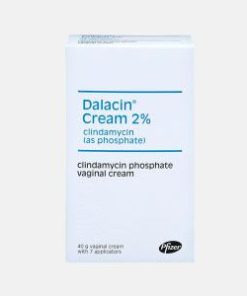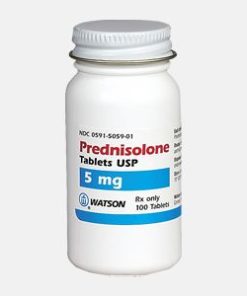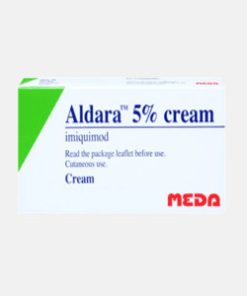Medrol (Methylprednisolone)
$126.00
Category: Skin Care & Dermatology
Commercial Name: Medrol
Active Ingredient: Methylprednisolone
Utilization: Modifies the immune system response to various conditions and decreases inflammation.
Available Dosages: 4mg, 8mg, 16mg and 32mg
| Dosage | Quantity | Price | |
|---|---|---|---|
| 4 mg | 30 pills | $126.00 | |
| 4 mg | 60 pills | $139.00 | |
| 4 mg | 90 pills | $151.00 | |
| 4 mg | 120 pills | $215.00 | |
| 4 mg | 180 pills | $308.00 | |
| 4 mg | 270 pills | $347.00 | |
| 4 mg | 360 pills | $384.00 | |
| 8 mg | 30 pills | $129.00 | |
| 8 mg | 60 pills | $192.00 | |
| 8 mg | 90 pills | $253.00 | |
| 8 mg | 120 pills | $342.00 | |
| 8 mg | 180 pills | $507.00 | |
| 8 mg | 270 pills | $683.00 | |
| 8 mg | 360 pills | $936.00 | |
| 16 mg | 30 pills | $142.00 | |
| 16 mg | 60 pills | $219.00 | |
| 16 mg | 90 pills | $295.00 | |
| 16 mg | 120 pills | $405.00 | |
| 16 mg | 180 pills | $590.00 | |
| 16 mg | 270 pills | $810.00 | |
| 16 mg | 360 pills | $1,105.00 | |
| 32 mg | 30 pills | $155.00 | |
| 32 mg | 60 pills | $247.00 | |
| 32 mg | 90 pills | $338.00 | |
| 32 mg | 180 pills | $468.00 | |
| 32 mg | 270 pills | $936.00 | |
| 32 mg | 360 pills | $1,272.00 |
Medrol (Methylprednisolone) belongs to the group of glucocorticosteroid drugs. The drug helps to stabilize cell membranes, improve microcirculation, reduce capillary permeability, which leads to a decrease in the development of inflammation. It has anti-inflammatory, immunosuppressive and anti-allergic effects.
Indication for use
Medrol (Methylprednisolone) can be taken by almost all adults and children in case of:
• endocrine diseases: congenital adrenal hyperplasia, primary and secondary adrenal insufficiency;
• diseases of the musculoskeletal system: juvenile rheumatoid arthritis, rheumatoid arthritis;
• systemic diseases of the connective tissues: acute rheumatic heart disease, systemic dermatomyositis, polymyalgia rheumatism;
• skin diseases: herpetiform bullous dermatitis, ordinary (vulgar) pemphigus, severe erythema multiforme, severe psoriasis, fungal mycosis;
• allergic conditions: rhinitis, allergic contact dermatitis, serum sickness, bronchial asthma;
• ophthalmic diseases: optic neuritis, anterior and posterior uveitis, sympathetic ophthalmia;
• respiratory diseases: disseminated and fulminant tuberculosis, symptomatic sarcoidosis, berylliosis, aspiration pneumonitis;
• hematological diseases: hemolytic anemia, idiopathic thrombocytopenic purpura;
• oncological diseases: malignant lymphoma, leukemia;
• diseases of the gastrointestinal tract: ulcerative colitis and Crohn’s disease.
Precautions
Medrol (Methylprednisolone) is not recommended to use if you have hypersensitivity, acute peptic ulcer, herpes of the cornea, active tuberculosis, acute psychoses, systemic fungal infections, severe diabetes mellitus. In case of pregnancy or period of lactation you have to take this medication only under doctor’s control.
Dose and usage
Medrol (Methylprednisolone) is produced in tablet form – 4mg, 16mg, 32mg – small, white, round, flat with two crossed notches.
The tablets are used after meals, in the morning, daily or every other day. At the beginning of treatment, 4 mg to 48 mg per day is usually prescribed, for some diseases (multiple sclerosis, cerebral edema), the dose can be from 200 mg to 1000 mg per day, during transplantation – up to 7 mg / kg per day.
For children, the dose is determined solely by the doctor, according to the weight of the body.
Side effects
The use of the drug can cause side effects from:
• endocrine system: in children, delayed sexual development, diabetes mellitus.
• digestive system: nausea, pancreatitis, vomiting, decreased or increased appetite, gastric and duodenal ulcer, flatulence.
• cardiovascular system: bradycardia, arrhythmias.
• nervous system: vertigo, disorientation, dizziness, euphoria, nervousness, headache, hallucinations, insomnia.
• sensory organs: sudden loss of vision, posterior subcapsular cataract, exophthalmos.
• metabolism: weight gain, hypocalcemia, increased sweating.
• musculoskeletal system: atrophy, growth retardation in children, steroid myopathy, rupture of tendons of muscles, osteoporosis.
• mucous membranes and skin integuments: steroid acne, petechiae, striae, delayed wound healing, thinning of the skin, ecchymosis, hypo- or hyperpigmentation, pyoderma and candidiasis.
Related products
Skin Care & Dermatology
$109.00
Skin Care & Dermatology
Skin Care & Dermatology
$101.00
Skin Care & Dermatology
$98.00
Skin Care & Dermatology
Skin Care & Dermatology
Skin Care & Dermatology










